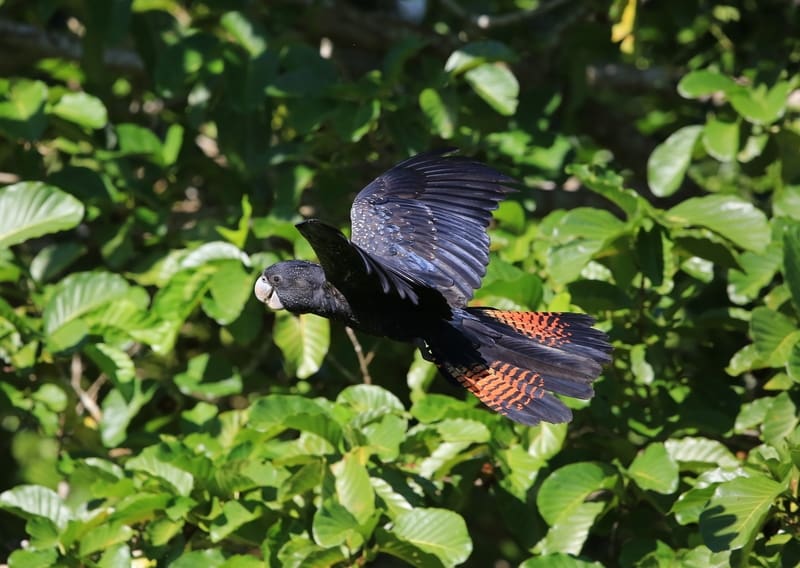The Red-tailed Black Cockatoo (Calyptorhynchus banksii) has been affected by human-generated pressures. In 1991, author and ornithologist Joe Forshaw encouraged the WPT to provide funding for a project in South Australia to help protect a remnant population of the graptogyne sub-species of the Red-tailed Black Cockatoo. The WPT funded the monitoring and guarding of these birds for six years, from 1991 to 1997.
The responsibility for protecting these birds was taken over by the State Governments of South Australia and Victoria and continues today. And for the first time, the 2014 Great Cocky Count, conducted through Birdlife Western Australia’s Threatened Black Cockatoo Program, also included the Red-tailed Black Cockatoo. Birdlife’s volunteers are monitoring the breeding and feeding ecology of all of the black cockatoo species in SW Australia.
Status: IUCN Least Concern / CITES Appendix II
Population: Over 100,000; graptogyne only 1000.
Range: C.b. banksii: NE Australia, including offshore islands, from the Gulf of Carpentaria and C Cape York Peninsula, N Queensland, south to SE Queensland and rarely to NE New South Wales.
C.b. macrorhynchus: N Australia from Kimberly division of W Australia east to Gulf of Carpentaria, N Queensland.
C.b. samueli: Coastal and subcoastal mid-W Australia; along rivers of central ranges in southern Northern Territory and northern S Australia; Lake Eyre and Bulloo River from SW Queensland to far NE South Australia; along upper to middle reaches of Darling River and its tributaries in W New South Wales.
C.b. graptogyne: SW Victoria and SE South Australia.
C.b. naso: SW Australia north to Darling Range and east to Stirling Ranges.
Natural history: The Red-tailed Black Cockatoo is found in areas with Eucalyptus trees, usually along river systems. They are nomadic, with seasonal movement in the north, also travelling inland during the wet season. Southern birds move where food is abundant; large flocks gather where they find a lot of food: seeds, nuts, fruits of Eucalypts, and sometimes larvae. Birds create a large amount of leaf, twig and branch litter beneath trees they have fed at and are found in family groups of three within larger flocks of up to 2000 birds.

